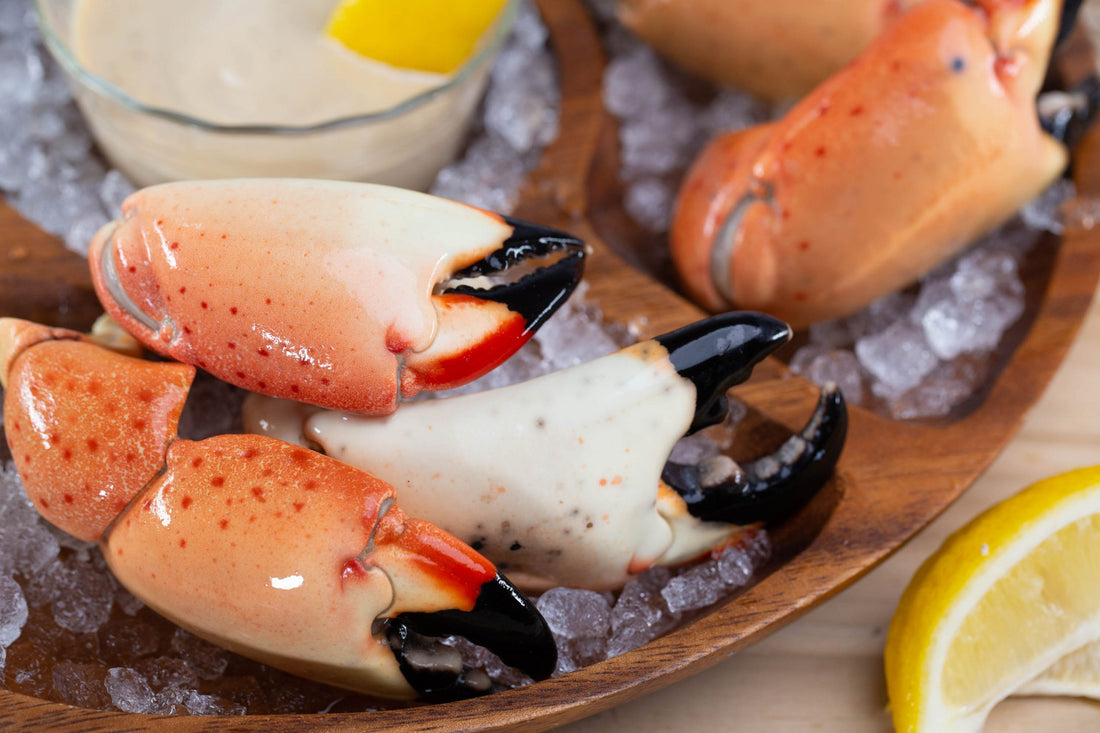Stone crabs are one of the most prized delicacies in coastal regions, especially in Florida, where a vast majority of stone crab harvesting takes place. Known for their sweet, tender, and succulent claws, stone crabs have become a seasonal delight for seafood lovers across the country. However, enjoying stone crabs isn’t a year-round affair—it is tied to a specific season that has ecological and regulatory implications. So, when exactly is stone crab season, and why is it so important?
Stone Crab Season Dates
Stone crab season in the United States, particularly in Florida (where 98% of the stone crabs are harvested), typically runs from October 15 through May 1. This window is strictly enforced by wildlife and fisheries authorities to protect the stone crab population and ensure sustainable harvesting practices.
While these dates may seem arbitrary, they are actually based on the life cycle of the stone crab and the need to give them a chance to reproduce and regenerate their claws. Outside of this period, stone crabs are left alone to feed, grow, and continue their role in the ecosystem, ensuring that future generations of these crustaceans remain plentiful.
Why Stone Crab Season Exists
Stone crab season isn’t just about giving fishers a window to catch and harvest claws—it's fundamentally about conservation. The stone crab population is unique in that they are harvested without being killed. Instead, fishers harvest only one claw from each crab (most often the larger, dominant right claw) and then return the crab to the ocean. This practice allows the crab to regenerate the missing limb over time.
For this process to be sustainable, it's critical to regulate when and how stone crabs are harvested. If their claws are harvested year-round, it would disrupt their natural reproduction cycle, prevent them from regenerating their claws, and ultimately lead to a significant population decline. Limiting the harvesting period helps to protect stone crabs during their most vulnerable times, particularly during their molting and reproduction phases.
What Happens Outside of Stone Crab Season?
During the off-season, which runs from May 2 through October 14, stone crabs are left to their natural behaviors without human interference. This time of the year is essential for their molting and regrowth process. Stone crabs regenerate lost claws over several months, and for female crabs, this period is also vital for reproduction. Females tend to carry eggs during this time, and the uninterrupted breeding season ensures a healthy stone crab population in the years to come.
Furthermore, during the off-season, fishing for stone crabs is prohibited, with strict penalties for those who violate the law. This legal framework helps to curb overfishing and ensures that the stone crab population is not jeopardized by unsustainable harvesting practices.
Stone Crab Lifecycle and Regeneration
Understanding the stone crab's life cycle helps to explain the reasoning behind the seasonal harvesting window. Stone crabs molt several times throughout their lives, shedding their exoskeleton and growing new ones. The molting process is essential for the crab’s growth and claw regeneration. When a stone crab loses a claw, it can take anywhere from several months to over a year to fully regrow it, depending on the crab’s age, health, and environmental conditions.
Interestingly, stone crabs can only regenerate one claw at a time. This is why fishers are careful to take only one claw, ensuring that the crab can still defend itself and go about its normal activities. Once the claw has been removed and the crab is returned to the water, the regeneration process begins almost immediately, with a small nub growing from the stump. Over time, this nub hardens and grows into a fully functioning claw.
How to Enjoy Stone Crabs During the Season
Stone crab claws are a delicacy enjoyed by many, especially in seafood restaurants and coastal regions. However, because of their seasonal nature, they can be quite expensive. Stone crabs are typically sold by the pound, with the price fluctuating depending on the market, the size of the claws, and the time of year.
During the season, seafood lovers can indulge in fresh stone crab claws, often served cold with mustard sauce or hot with melted butter. Many top-tier seafood restaurants, particularly in Florida, serve stone crab as a seasonal specialty, offering customers a taste of this iconic seafood.
For those who can’t make it to a restaurant or prefer to enjoy them at home, many seafood markets offer fresh or frozen stone crab claws during the season. You can also order them online from specialty retailers, ensuring you get a fresh and high-quality product delivered straight to your door. Whether you choose to eat them on their own or incorporate them into dishes like salads or seafood platters, stone crab claws are a true seafood lover's delight.
Key Largo Fisheries: Your Source for Fresh Stone Crabs
If you're wondering where to find fresh stone crabs during the season, look no further than Key Largo Fisheries. As a leading provider of Florida stone crab claws, Key Largo Fisheries offers an assortment of stone crab claws in different sizes, allowing customers to enjoy the freshest catch of the season. From medium-sized claws to jumbo claws, Key Largo Fisheries ensures that each order is expertly packed and shipped to maintain the highest quality.
Stone crab season is a time to savor one of Florida's most delicious and sustainable seafood offerings. Running from October 15 through May 1, this period is carefully designed to balance the needs of both fishers and the stone crab population. Whether you're dining at a seafood restaurant or ordering from Key Largo Fisheries, this limited-time offering provides an incredible opportunity to enjoy fresh, sweet, and delectable stone crab claws. So, mark your calendar and get ready to indulge in one of nature’s finest treasures!

